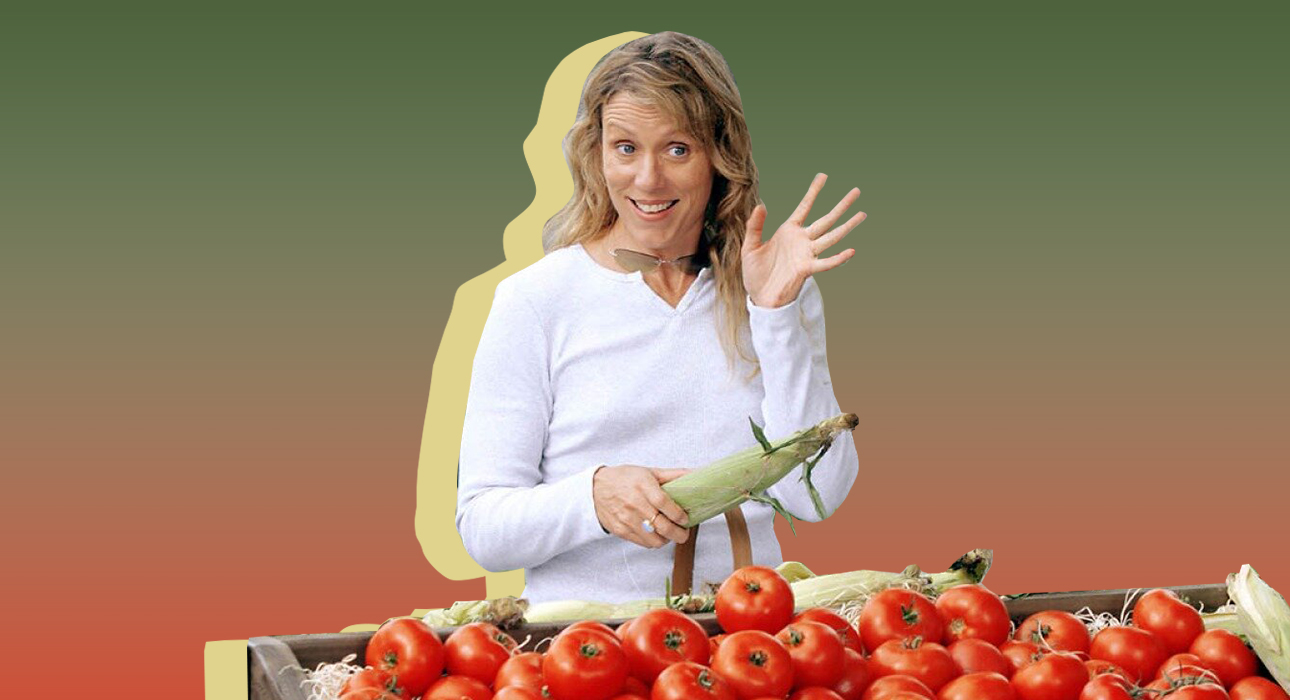Dear reader, we present to you our beauty columnist Inessa Tsarkova.
Inessa is an active nutritionist, gastroenterologist, therapist, naturopath and aromatherapist, health coach, integrative medicine doctor with a holistic approach. And now he will share with us his knowledge in the field of both physical and mental health, nutrition and much more.
“I am afraid to eat vegetables and greens because they contain nitrates” is a phrase I often hear in my health consultations.
Friends, it is time to address this issue once and for all. Understand that vegetables and greens are vital for us. For us, it is perhaps one of the most important components of creating a healthy diet.

Inessa Tsarkova
It is raw fresh vegetables and greens that help preserve our youth and health, they provide the body with vitamins, minerals and antioxidants (for this it is best to make freshly squeezed juices and smoothies), they activate the cleansing organs and help remove everything unnecessary from the body. They nourish the body and, most importantly, our friends, beneficial microbes, without which it is impossible to maintain health and strong immunity.
What is the daily amount of vegetables and which ones are best?
According to the recommendations of WHO, the Institute of Nutrition of the Russian Academy of Medical Sciences and all authorized nutritionists, their amount in our diet should be at least 850 g per day.

And these should not only be fruits of generally accepted vegetables: tomatoes, cucumbers, peppers. Some parts of plants are especially useful: leaves, stems and root vegetables (carrots, beets, various types of cabbage, leafy greens, celery, various radishes and radishes, bitter herbs and wild herbs).
What about nitrates?
Yes, in fact, vegetables and herbs contain nitrates and have negative effects on our body. Its extremes are especially dangerous. Moreover, it is important to realize that nitrates are not only found in vegetables. It is also abundant in grains and animal products. As a result, they dissolve easily in water and mix with animal feed and soil. In addition, the food industry specifically adds nitrates to perishable foods to preserve them and improve their color (it is thanks to them that sausages and smoked products acquire such an “appetizing” pink and red color). There are a lot of these unhealthy substances in canned food and bakery products, as well as in tablets containing nitrate salts (which is why alternative medicines – essential oils – have become so popular today).
Nitrates are derivatives of ammonia. They can integrate into the biochemical reactions of our body and thus disrupt the processes occurring in it.
What is the harm of nitrates?
Nitrates are converted to nitrites and oxidize hemoglobin in red blood cells. The latter turns into methemoglobin, which cannot bind and transport oxygen. All this leads to oxygen starvation of cells, disruption of processes in them and a decrease in energy levels.
As free radicals, they cause systemic inflammation.
Promote damage to the vascular wall and the development of atherosclerosis.
They inhibit beneficial microflora and promote the activation of pathogenic ones.
They consume the body’s reserve (buffer) systems, leading to disruption of homeostasis (constancy of the internal environment).
Chronic nitrate poisoning negatively affects the thyroid gland, inhibiting iodine absorption and increasing the size and function of the thyroid gland.
They inhibit the reproductive system and harm childbirth (contribute to the development of sexual weakness, can terminate pregnancy).
Reduce the amount of vitamins in plants.
With the simultaneous intake of large amounts of nitrates (for example, from a watermelon poisoned by them), vascular collapse (sharp expansion of small vessels) may develop.
Nitrosamines (into which nitrates are converted) have a carcinogenic effect and can activate the growth of cancer cells.
Friends, do not panic. Dose is important!
In small quantities (no more than 2%), they are not at all scary for us, as they are easily dissolved in water (by the way, they also get into plants), especially in hot water, and they can be dissolved just as easily. It is removed from vegetables or our body along with water.

This is another reason to drink enough clean hot water.
The body uses all possible means (even through breast milk) to remove toxic substances (including nitrates). And nursing mothers need to especially remember this.
We have a wonderful special enzyme that our liver produces. Already from the third month of life, it begins to be synthesized and controls the level of methemoglobin in the blood. Therefore, it is very important to properly take care of the health of your liver and not overload it with toxins (medicines, chemical additives in food, household chemicals and cosmetics, alcohol). Also pay attention to the good functioning of the gallbladder and intestines, ensuring their timely cleansing.
An excess of nitrates (about 30%) leads to poisoning with all the ensuing negative consequences, especially in combination with poor liver function. Excessive amounts (above 50%) can even lead to death.
How can you help your body reduce the toxic effects of nitrates?
Keep a nitrate tester and check its amount in foods.
If possible, choose the right vegetables grown according to the “organic farming” system.
Clean vegetables properly, removing parts that contain the maximum amount of nitrates (these substances are unevenly distributed in plants).
Carrots and beets: peel, seed and cut 1–1.5 cm from both ends of the roots.
Cabbage: cut off the stem, remove the top five leaves and cut off the thick veins.
Celery: A lot of nitrate accumulates in its stems, so it’s best to pre-soak them or eat mostly the leaves.
Tomato: remove 1–1.5 cm of the area adjacent to the stem and core. If tomato fruits have too much nitrate, the inner parts of them will harden and turn yellow and need to be removed. And it is best not to eat such fruits at all.
Cucumber, zucchini, eggplant: cut off the skin, remove 1–1.5 cm from the area adjacent to the stem.
Soak vegetables and herbs (the warmer the water, the better). At the same time, it is possible to remove from 10 to 90% of harmful nitrates from vegetables (after one hour 5%, after two – about 10, after three – about 40%).
Peeling and cutting vegetables significantly speeds up this process. True, water-soluble vitamins (especially vitamin C) will also be washed away to some extent. But most of the useful things will still remain.
It is better to soak vegetables in water from 15-20 minutes to 8 hours or more (overnight). Change the water frequently while soaking.
To do this, you can use a 1% solution of lemon juice or ascorbic acid, baking soda, table or sea salt, lemon essential oil (this is my favorite solution).
After one day, thanks to this solution, up to 90% of the nitrogenous salts are neutralized and removed.
Eat prepared vegetable salads immediately (even when stored in the refrigerator, nitrates will turn into even more harmful nitrites).
You can definitely boil the vegetables (3-5 minutes) and drain the water. Nitrates in hot water quickly pass into the broth and are converted into poorly soluble salts, which are practically not excreted from the body, accumulating in the joints and tissues.
My dear readers, I wish you again to feel awareness and love for your body, not to be afraid of nitrates (and not to be afraid of anything in this life), to become friends with fresh vegetables and herbs, to learn how to prepare them. It is as beneficial as possible for your health.
Source: People Talk
Errol Villanueva is an author and lifestyle journalist who writes for The Fashion Vibes. With a passion for exploring the latest trends in fashion, food, travel, and wellness, Errol’s articles are a must-read for anyone interested in living a stylish and fulfilling life.





